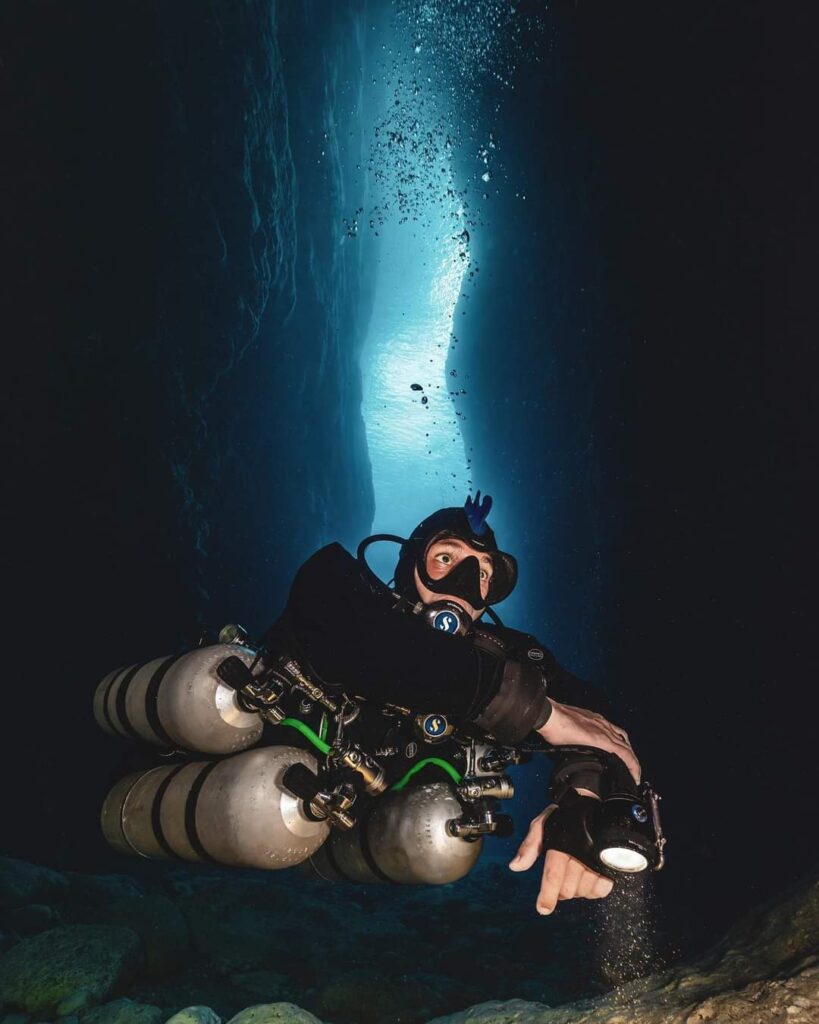The difference between Sidemount diving and twin-tank diving

Sidemount diving, or english diving refers to a unique technique, an innovative alternative for transporting diving equipment underwater. Sidemount involves using specialized equipment where diving cylinders are attached laterally, under the armpits and along the body, rather than on the diver’s back. This approach is accompanied by a set of optimized techniques and procedures to ensure optimal levels of performance and efficiency.
Various configurations are possible, from a single cylinder on the side for recreational dives to the use of two cylinders (one under each arm), and even multiple tanks for more complex dives. Originating in the UK and initially adopted by cave divers, sidemount has crossed oceans to be embraced and perfected by cave divers in Florida and the Yucatan. It has spread among technical divers and wreck divers, eventually attracting recreational divers enticed by the fluidity and ease offered by this configuration.
Initially confidential, sidemount is now spreading globally due to the freedom of movement it provides. Like the development of freediving, it can be seen as a solution for those seeking lightness, simplicity, and freedom, addressing the need for differentiation and the desire to travel with compact and lightweight equipment, even alleviating back issues.
The advantages of sidemount diving are numerous: an enhanced gliding sensation with improved balance due to the repositioning of the center of gravity, better hydrodynamics compared to a back-mounted tank, a clear horizontal position in the water, increased comfort with cylinders on the side, and enhanced safety due to equipment redundancy.
Beyond the equipment aspect, sidemount represents a holistic approach to diving, a quest for optimization and rationalization to master and perceive advanced evolution in the aquatic space. This technique, suitable for freshwater or saltwater diving, offers undeniable benefits underwater, provided its subtleties are understood. Therefore, it is highly recommended to start sidemount training, either within an organization or with the guidance of an experienced sidemount diver.
One of the key benefits of sidemount diving lies in managing the transport of diving cylinders. This configuration allows for diving with two cylinders, ensuring an ample air supply without compromising the diver’s spinal health. Access points to dive sites from the shore are not always easy, and transporting a considerably heavy twin-tank over a significant distance can be particularly challenging. Thanks to the sidemount configuration, the diver can transport cylinders individually and equip themselves directly in the water before easily attaching them to their harness using carabiners. Currently, some brands offer carbon cylinders, considerably lighter than steel or aluminum, putting an end to back issues.
In contrast to back-mounted cylinders, the sidemount diver has direct access to the valves of their cylinders and regulators. This feature facilitates quicker and safer identification and resolution of issues, setting it apart from the twin-tank system that requires a higher level of flexibility.
Sidemount training is available from the age of 14, starting from Level 1, with certification awarded after six dives in the 0-20 meter zone. This makes it accessible to a broad audience seeking new underwater experiences.